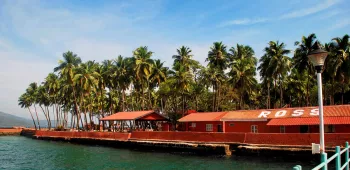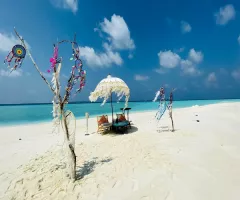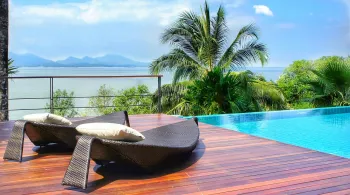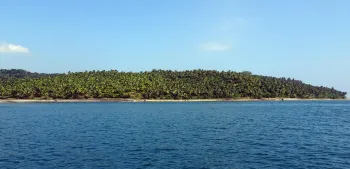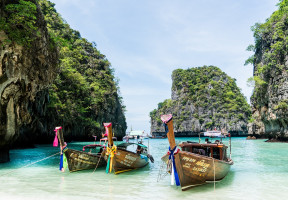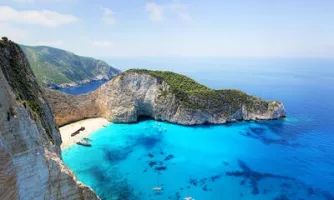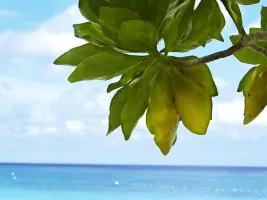7N 8D Andaman Cruise Holidays
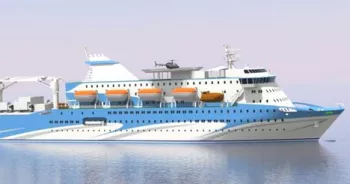

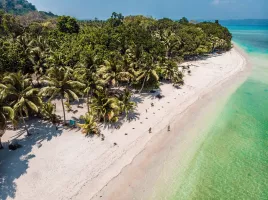
About Package
Book you lucrative tour package of Port Blair for 7 Nights, 8 Days offered by Andaman Tourism Online at 37,777 /Per Person . Find detailed day wise itinerary of Port Blair tour package below which will be further customized once you enquire with us and share you trip details.
Enquire for an exciting Port Blair sightseeing tour which will cover some of the most exciting places to visit near and at Port Blair.
If you have any query regarding booking of your Port Blair tour package then please call us at our 24x7 helpline number present at our profile page - Andaman Tourism Online and to book your tour to Port Blair please send your trip details in our tour package booking form.
To enjoy your Port Blair trip don't forget to get the following activites added in your Port Blair itinerary
Package Summary
To enjoy you Port Blair trip don't forget to get the following activites added in your Port Blair
Detailed Day Wise Itinerary
- Day 1 M V Sindhu Cruise Departure From Chennai
![]() Info Day 1 DetailsCruise M v Sindhu
Info Day 1 DetailsCruise M v Sindhu
M V Sindhu
CRUISE – Chennai Arrive Chennai in Harbour after finishing the check – in formalities you can relax in your chosen cabin. You will be sailing through the beautiful ocean of Bay of Bengal. Overnight stay in the cruise.Dinner 6.30 PM To 7.30 PMCheck In
04:00 PMEnd of Day - Day 2 Cruise TravellingInfo Day 2 DetailsInfo
M V Sindhu Travelling
CRUISE SAILING This day you will sailing in the cruise which will be a memorable experience for years. Overnight stay in the cruise.Morning Tea coffee 5 30 To 7.00 Am
Breakfast 7.30 To 8.30AM
Lunch Time 12.00 To 1.00 PM
Evening Tea Snacks 4.00 To 5.00 PM
Night Dinner 6.30 To 7.30 PMEnd of Day - Day 3 Cruise TravellingInfo Day 3 DetailsInfo
M V Sindhu Travelling
CRUISE SAILING This day you will sailing in the cruise which will be a memorable experience for years. Overnight stay in the cruise.Morning Tea coffee 5 30 To 7.00 Am
Breakfast 7.30 To 8.30AM
Lunch Time 12.00 To 1.00 PM
Evening Tea Snacks 4.00 To 5.00 PM
Night Dinner 6.30 To 7.30 PMEnd of Day - Day 4 Andaman Arrival
![]() Info Day 4 DetailsActivityMorning Arrival in Andaman Port BlairMorning Port Blair ArrivalMorning Tea 5.30 To 7.00 AMBreakfast 7.30 To 8. 30AMHarbor Pick-up and Hotel Transfer
Info Day 4 DetailsActivityMorning Arrival in Andaman Port BlairMorning Port Blair ArrivalMorning Tea 5.30 To 7.00 AMBreakfast 7.30 To 8. 30AMHarbor Pick-up and Hotel Transfer
Sea Scape Port Blair Check-in Time : 08:00Samudrika Marine Museum - Port Blair
At a distance of 2 km from Port Blair Central Bus Stand, Samudrika Marine Museum is a museum situated in Haddo area of Port Blair in Andaman Islands. The museum is run by the Indian Navy and is one of the popular places to visit during Port Blair tour.Also known as Naval Marine Museum, Samudrika Museum create awareness on various aspects of oceanic environment and houses a vast collection of cells, corals and a few species of colourful fishes of the sea around the islands. The main attraction of the museum is the large skeleton of a blue whale. This museum is a perfect place to know about the various aspects of marine ecology.The museum has five sections presenting history of Andaman Islands, Geographical information, people of Andaman, Archaeology and Marine life. In the first section visitors would know the essential facts about Andamans like volcanoes, tribals, types of wood, insects, type of forests in Andamans. The second section, the aqua sections features an aquarium showing an extensive collection of fishes. The third section is Coral section and will showcase an extraordinary marine formation and their exact locations. The 3th & 5th section displays a large collection of seashells and tribal displays in Andamans. Moreover, the 5th section will also exhibit exotic butterflies, a variety of snake specimens, and war currency.Cellular Jail - Port Blair
At a distance of 1.5 km from Port Blair Central Bus Stand, the Cellular Jail, also known as Kala Pani, was a colonial prison located at Port Blair in the Andaman & Nicobar Islands. The prison was known to house many notable Indian activists during the struggle for India's independence. Today, the complex serves as a national memorial monument and also one of the top places to visit in Port Blair.The construction of the Cellular Jail was started by the British in 1896 and was completed in 1906. The penal settlement was established in Andamans by the British after the First War of Independence in 1857. It was the beginning of the agonizing story of freedom fighters in the massive and awful jails at Viper Island followed by the Cellular Jail. The prison was used by the British especially to exile political prisoners to the remote archipelago. Many notable freedom fighters such as Batukeshwar Dutt, Bhagat Singh and Veer Savarkar, among others, were imprisoned here during the struggle for India's independence.Cellular Jail is a massive three-storeyed structure with seven wings, radiating from a central watch tower, shaped like spokes of a wheel. Each wing in this jail had three storeys, which consist of total of 698 cells. The architecture of Cellular Jail was conceptualized on the basis of 'Pennsylvania System or Separate System' theory in which separate confinement is necessary for each inmate for complete isolation from other inmates. No communication of any kind was possible between prisoners in the same or different wings. The design of Cellular Jail consists of radiating wings that allow a single guard to keep watch on all the prisoners from the central tower.After Independence in 1947, Cellular Jail was declared as a National Memorial. Today the entrance block of the National Memorial houses, Freedom Fighters Photo and Exhibition Gallery in the ground floor. The first floor of the building has an Art Gallery, Netaji Gallery and a Library on Freedom Movement. Gallery on First War of Independence and on Old Photographs Gallery have also been set up in the premises of the Jail. An eternal flame of Freedom-Swatantrya Jyoti has been erected in the vicinity of the Cellular Jail in memory of all freedom fighters and martyrs. In addition, visitors can also experience light and sound show in Hindi and English during evening.Check Out
08:00 AMEnd of Day - Day 5 Havelock
![]() Info Day 5 DetailsActivity Port Blair To HavelockHavelock
Info Day 5 DetailsActivity Port Blair To HavelockHavelock
Radhanagar Beach - Havelock Island
At a distance of 65 km from Port Blair Central Bus Stand (road + ferry) and 11 km from Havelock Ferry Ghat, Radhanagar Beach, also known as Beach #7, is situated on the south coast of Havelock Island and is the most famous Andaman Beach. Radhanagar Beach is counted among the top 10 beautiful beaches of Asia and among best beaches in the world by Time Magazine.The most visited place in Andamans, Radhanagar is a long white sandy beach that sprawls across 2 km length and an average width of 30 to 40 m. Known for its picturesque sunset, white sand and turquoise blue waters, the beach is a very popular hub lying on the western coast of Havelock Island. The sand is white and very fine in grain. The lush and verdant trees on the side of beach offer tourists an opportunity to unwind and relish the serenity and nature's charm. The breathtaking sight of sunset on this beach makes the tourists forget all the woes of life.Due to its reputation and popularity one would expect large crowd of tourists rushing to the beach, but amazingly the Radhanagar mostly remains isolated and secluded. The beach is also very safe for swimming. There are no water sports but it is known to be one of the best places for nature lovers as it offers a wide range of flora and fauna. It is also a great place to spend some quality time with family and friends.The Havelock Island can be reached from Port Blair using government-operated ferries and private cruises. There are also helicopter services. From Havelock Ferry Ghat, one can take a local bus or hire an auto or rent a bike or bicycle to reach Radhanagar Beach.The turquoise blue sea and white sand make this beach a perfect spot to bask in the midst of nature's bounty. Radhanagar Beach is positioned just 7 kilometres away from Vijaynagar Beach and Dolphin Yatri Niwas and about 12 kms from Havelock Island.End of Day - Day 6 Elephant Beach
![]() Info Day 6 DetailsActivity Elephant BeachElephant Beach
Info Day 6 DetailsActivity Elephant BeachElephant Beach
Baratang Island Mud Volcano
Start Time : 05:00 am Duration : 10 Timezone : Asia/Kolkata
Visit Baratang Island in the comfort of a private vehicle. Pick-up is arranged from your hotel and you are dropped back to your hotel in Port Blair.Baratang Island is about 90 kms by the Andaman Trunk Road from Port Blair and a gateway to North & Middle Andaman islands. Baratang Island is popular destination for its geological and natural wonders - mangrove creeks, mud volcanoes and the limestone caves. First we drive all the way to Oralkatcha Jetty (also called Nilambur Jetty) passing through Jarawa Tribe Reserve, and from there after ferry crossing, a boat takes us to the Lime Stone Caves. The entry to the region is restricted by government authorities and only limited tourists are allowed at any given day.Once you reach Baratang you will notice mangrove forests on both sides of the strait and some offbeat beautiful beaches as well. Parrot Island is another tourist attraction nearby.Enjoy the tropical climate with a boat ride through thick mangrove forest with mangrove canopies blocking sunlight. Ride to the Limestone caves in Baratang Island is exciting as well as thrilling. Limestone cave is nothing short of an incredible piece of architecture by nature. Travelling by road from Port Blair – between south and middle Andaman, Baratang islands brings forth the tropical side of the Andaman Islands. Mangroves, birds, caves, trekking, and one of the last surviving indigenous local tribes - It’s a must visit place if you are in Andaman and Nicobar Islands, India.Baratang Island Day Trip Itinerary:The Baratang Island day tour begins for the guests with the pick-up from the hotel in Port Blair at 3:30 am in the early morning.The drive to Baratang Island is through the dense forest including Jarawa tribal area and is very scenic and adventurous.Cross the mangrove creek to reach the Baratang Jetty, boat ferry ride on to limestone caves starts here.From the boat drop point, it is a short 20-minute walk to the limestone caves. The caves are made up of the mineral calcite and have very beautiful natural formations.The guests will have up to 20 to 30 minutes to spend at the caves before proceeding back to Jetty and then to the Mud Volcano.Drive to Mud Volcano by cab and witness the rare mud volcanos.After the visit to the mud volcano, start the return road journey to Port Blair.Guests will be dropped back to the hotel at end of the tourMakruss (Departure)
From : Havelock To : Port Blair
Time : 04:00 pm Duration : 1.30Hr Timezone : Asia/Kolkata
End of Day - Day 7 Coral Islands
![]() Info Day 7 DetailsActivity Coral Islands
Info Day 7 DetailsActivity Coral Islands
Coral Island ( Ross and North Bay Island)
Coral Island ( Ross and North Bay Island)
North Bay and Netaji Subhas Bose (Ross) IslandA short 45 minutes boat ride from the Aberdeen Jetty (in Port Blair) will reach you at the North Bay Beach. Though the beach is constantly under the pressure of heavy tourist footfalls, it is one of the cleanest beaches in Andaman. There is also a tall Lighthouse overlooking the beach. This island is famous for diving sites near the beach, which are blessed with rich coral reef structures and amazing underwater marine life.Ross the island was the administrative headquarters of British rule in Andaman till 1941 when an earthquake destroyed the island. Again during the 2nd world war, The Japanese army took control over Ross Island and made it their camp.The first thing you will notice on reaching the island is the Japanese bunkers used during the world war. This island was a typical British colony during the early 19th century. The paved roads with beautifully built Victorian buildings on both sides, British bungalows, grocery shops, bakery, church, hospital, cemetery, swimming pool, offices, etc.How to reach North Bay and Netaji Subhas Bose (Ross) Island?You need to reach the water sports complex to board your boat for North Bay and Ross Island. Some boats go to Ross Island first and some to North Bay. Either way, you will be able to visit both the islands.End of Day - Day 8 Flight Departure From Port BlairFlights Day 8 DetailsFrom
Port Blair-Vir Savarkar International AirportEnd of Day
Inclusion
- Private Cab Transfers
- Sightseeing tour
- Breakfast
- Accommodation
- Tolls
Exclusion
- Anything not mentioned in inclusions
Andaman Tourism Online
Didn't get what your are looking for?
( 147 Reviews )
( 37 Reviews )
( 489 Reviews )
( 37 Reviews )
( 230 Reviews )
( 74 Reviews )
( 128 Reviews )
( 314 Reviews )
( 107 Reviews )
( 128 Reviews )
₹ (INR) 37,777
/Per Person *Excluding applicable taxes
Help & Support
Call Us Now
+91-8069145442
Package By
/Per Person

